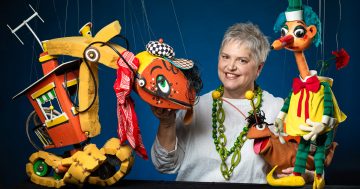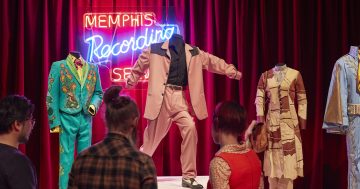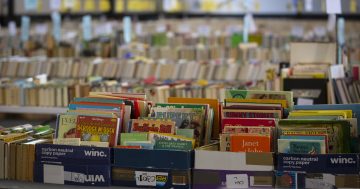
Mr Squiggle and Friends presenter Rebecca Hetherington and National Museum of Australia senior curator Dr Sophie Jensen. Photo: James Coleman.
He’s like the Bluey of the previous generations.
Mr Squiggle and his friends Blackboard, Rocket, Bill Steamshovel and Gus the Snail have joined the collection at the National Museum of Australia in Canberra more than two decades after they retired from their own television show.
With his pencil nose and colourful costume, the puppet originally came from “the moon” in his pet rocket to fill a six-week gap in the ABC’s schedule in July 1959, but Mr Squiggle and Friends quickly captivated audiences the country over.
Children would send in their drawings, and with the help of his friends, Mr Squiggle would finish them live on air.
The result became one of the longest-running television programs ever, until its finale was aired on 9 July 1999.
The entire cast of puppets retired with the show’s creator, Norman Hetherington, and – when not featured in exhibitions at the National Film and Sound Archive, Australian Centre for the Moving Image, or on the ABC TV series Collectors – lived in the basement of his Sydney home.
Mr Hetherington died in December 2010 aged 89.

Mr Squiggle and Friends was the brainchild of Norman Hetherington, a Sydney-based cartoonist and puppeteer. Photo: National Museum of Australia.
Norman’s daughter, Rebecca Hetherington, the show’s last presenter, decided the National Museum was “the natural choice” to celebrate her father’s legacy.
“For about the last 10 years, I’ve been sorting out the collection in the studio and trying to figure out what to do with it all,” she says.
“My father kept everything he did – from his teenage years doing cartoons, to going to war and drawing and painting during the war, then becoming a professional cartoonist, then becoming a puppeteer, then his first night on television [1 July 1959] and the next 40 years of television.”
Mr Squiggle is older than she is – Rebecca was born in 1962, and it’s no coincidence that’s the same year Bill Steamshovel joined the show.
“Bill Steamshovel came about because we had roadworks near where we lived in Sydney, and I was a crying baby, but every time the roadworks started each day, I would fall asleep. It was blissful for the family.
“So when my father was asked to make another puppet that could hand out prizes to the children in a live studio audience, he had to find something with a really big mouth. Looking at these roadworks and me, he thought, ‘That could work’.”
During the school holidays, Rebecca would join her father at work and watch the recording live. Her mum Margaret wrote all the scripts.
“It was fantastic until I found out The Aunty Jack Show was being recorded next door, and I’d be far more interested in that. You take for granted what’s right in front of you, sometimes, but looking back, it was pretty amazing.”
As she grew older, she took on a more hands-on role to the point that when a vacancy on the show popped up in 1989, she joined as a presenter alongside Norman.
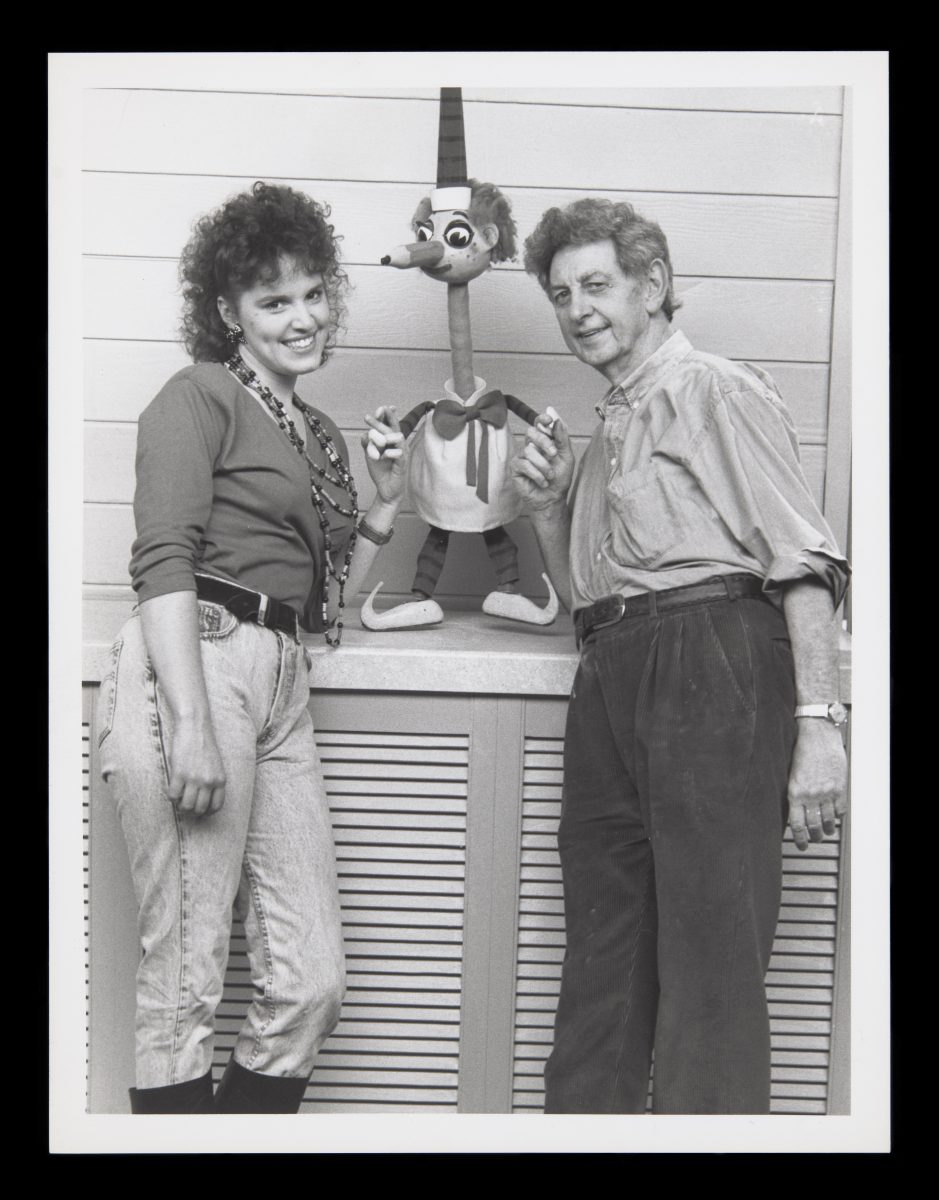
Rebecca Hetherington followed in her father’s footsteps to help present Mr Squiggle from 1989 to 1999. Photo: National Museum of Australia.
“Even if I’d never met him and just turned up and auditioned and got the show, I still think he would have been one of my favourite people to have worked with,” she says.
“He had a great sense of humour, never complained and always wanted a 200 per cent performance.”
The collection at the National Museum includes the original Mr Squiggle marionette and more than 800 related objects, including fellow puppets, artworks, scripts, costumes, props, sets, production notes, merchandise and audiovisual material.
Dr Sophie Jensen, senior curator at the National Museum, grew up watching him and says many others will see their “whole childhood” in the collection.
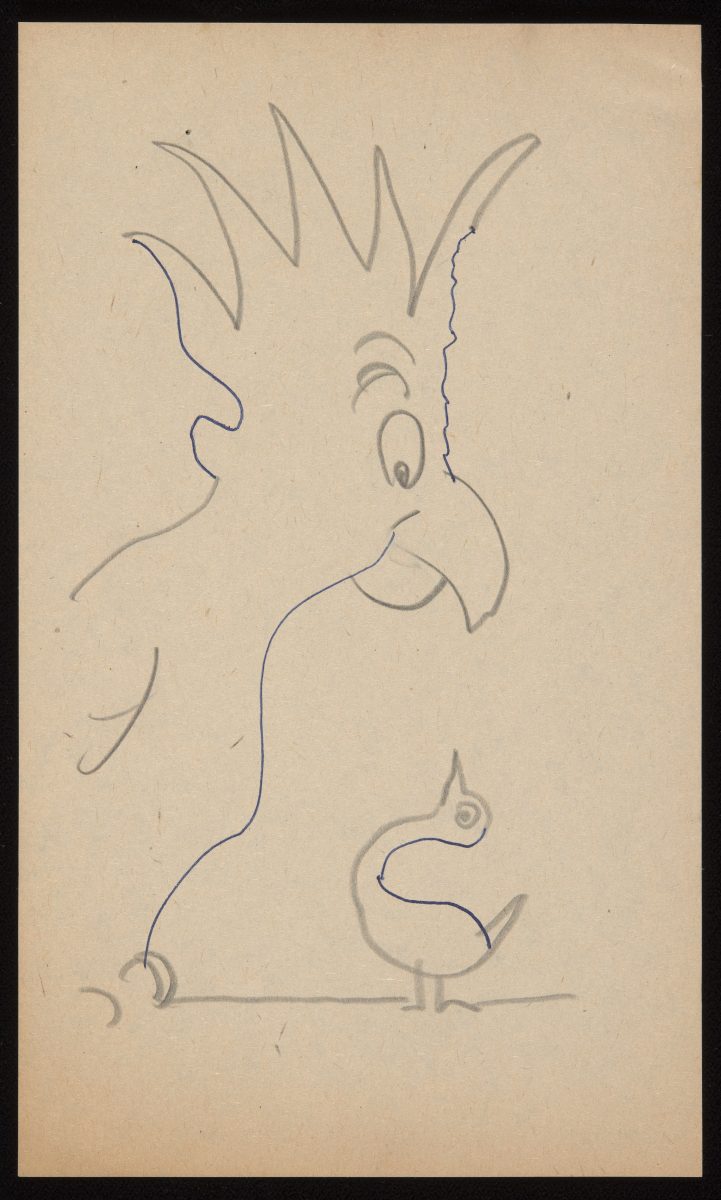
An original squiggle from Mr Squiggle and Friends. Photo: Jason McCarthy, National Museum of Australia.
“I think a couple of things made him really popular. One, he was an Australian – he’s speaking to us in our language and is part of our culture, our society, our identity. Two, he was just a very likeable character, even if his friends were kind of cheeky and grumpy.
“But I think at its heart, what was lovely about Mr Squiggle was his interaction with audiences. Over 40 years, he completed over 10,000 squiggles, and that is 10,000 children from across Australia who had sent in their drawings Mr Squiggle had then completed. It’s a direct relationship between him as a character and you sitting in your home in suburban Sydney or Tasmania.”
Mr Squiggle and Friends – the Norman Hetherington collection will be displayed at the National Museum until 16 May 2024. A larger exhibition, featuring more of Mr Squiggle’s friends, is planned for the middle of next year.












